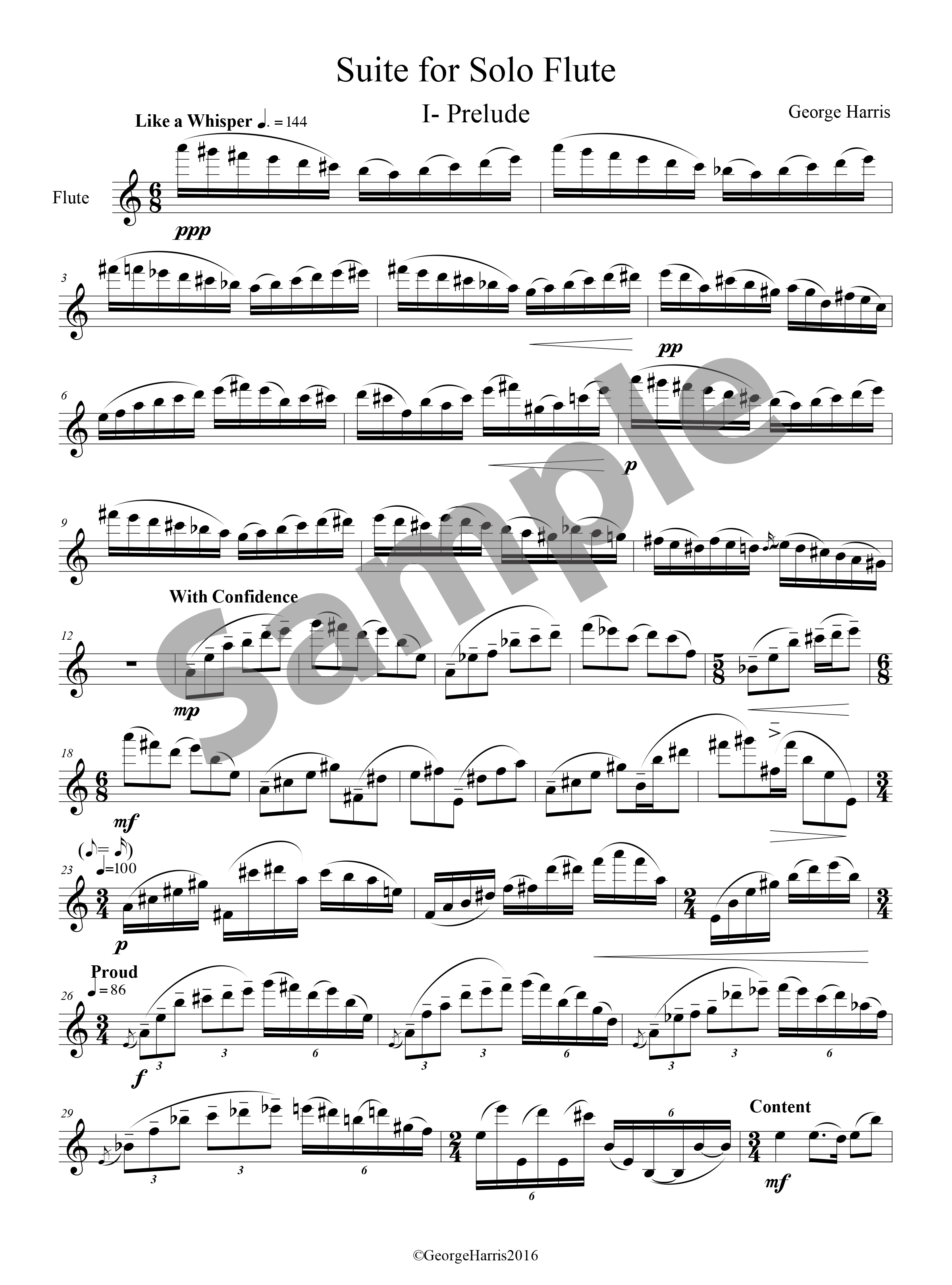 Image 1 of 1
Image 1 of 1


Suite for Solo Flute (IV)
Four movement piece for solo flute
Approx. 12 minute duration
Advanced Difficulty
Composed 2014-2015
Includes many extended techniques
Movements:
I - Prelude
II - Tone Poem
III - Arioso
IV - Scherzo
“Initially I titled this piece my Symphony for Solo Flute as the motivation behind this massively challenging piece was to answer the question of how to make one lone flutist have the same fullness and complete musical impact as a large ensemble of many players.
Prelude uses the arpeggiated style of monophonic self-accompaniment made famous by music of the Baroque era contrasted with sections of clearly implied rhythmic background.
Tone Poem uses various methods of literally producing multiple sounds simultaneously on the flute including an in depth exploration of multiphonic fingerings, through-composed beatboxing while playing, and singing while playing.
Arioso is meant to be a melody so simple but emotionally meaningful that it does not require any accompanying musical parts to add to its already complete form such as in a mother singing a lullaby or a solo singer performing the song Amazing Grace.
Scherzo is an explosive conclusion to the piece that uses many of the previous ideas while introducing even more extended techniques which serves as a finale full of positive energy.”
~This piece includes material referenced in my free guide to extended techniques
Four movement piece for solo flute
Approx. 12 minute duration
Advanced Difficulty
Composed 2014-2015
Includes many extended techniques
Movements:
I - Prelude
II - Tone Poem
III - Arioso
IV - Scherzo
“Initially I titled this piece my Symphony for Solo Flute as the motivation behind this massively challenging piece was to answer the question of how to make one lone flutist have the same fullness and complete musical impact as a large ensemble of many players.
Prelude uses the arpeggiated style of monophonic self-accompaniment made famous by music of the Baroque era contrasted with sections of clearly implied rhythmic background.
Tone Poem uses various methods of literally producing multiple sounds simultaneously on the flute including an in depth exploration of multiphonic fingerings, through-composed beatboxing while playing, and singing while playing.
Arioso is meant to be a melody so simple but emotionally meaningful that it does not require any accompanying musical parts to add to its already complete form such as in a mother singing a lullaby or a solo singer performing the song Amazing Grace.
Scherzo is an explosive conclusion to the piece that uses many of the previous ideas while introducing even more extended techniques which serves as a finale full of positive energy.”
~This piece includes material referenced in my free guide to extended techniques